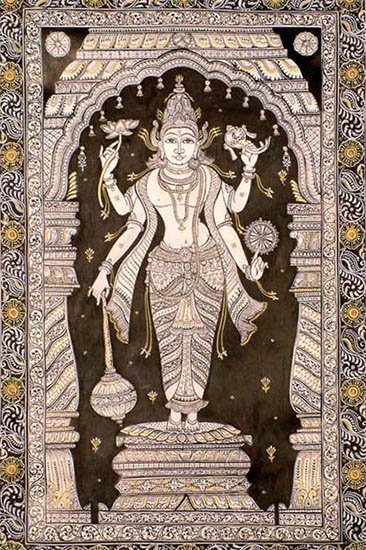Snapanabera, Snapana-bera, Snāpanabera: 3 definitions
Introduction:
Snapanabera means something in Hinduism, Sanskrit. If you want to know the exact meaning, history, etymology or English translation of this term then check out the descriptions on this page. Add your comment or reference to a book if you want to contribute to this summary article.
In Hinduism
Shilpashastra (iconography)
Source: Google Books: The Book of Hindu Imagery: Gods, Manifestations and Their MeaningSnapanabera—(group of Hindu temple imagery)—Images which are intended for bathing, square pedestal or seat.
Source: Red Zambala: Hindu Icons and Symbols | IntroductionSnapanabera (स्नपनबेर, “bathing image”).—The icon used for the daily bathing ceremony. The compound Snapanabera is composed of the Sanskrit words Snapana (‘bathing’) and Bera (‘image’ or ‘icon’).
Source: Shodhganga: The significance of the mūla-beras (śilpa)Snāpanabera (स्नापनबेर) refers to a process of iconographic worship carried out in a Hindu temple.—In addition to the worship of the dhruva-bera in a temple, there are other images worshipped in the temple. They are the dhruvārcā (the chief deity where the various abulations and rituals are carried out directly to the image), the utsava-bera (for festival occasions), snāpanabera (for special ablutions), and bali-bera (to which sacrifices for the subsidiary devas are offered).

Shilpashastra (शिल्पशास्त्र, śilpaśāstra) represents the ancient Indian science (shastra) of creative arts (shilpa) such as sculpture, iconography and painting. Closely related to Vastushastra (architecture), they often share the same literature.
See also (Relevant definitions)
Relevant text
Search found 1 books and stories containing Snapanabera, Snapana-bera, Snāpanabera, Snāpana-bera; (plurals include: Snapanaberas, beras, Snāpanaberas). You can also click to the full overview containing English textual excerpts. Below are direct links for the most relevant articles:
Indian Iconography in an Historical Perspective with < [October – December, 1994]